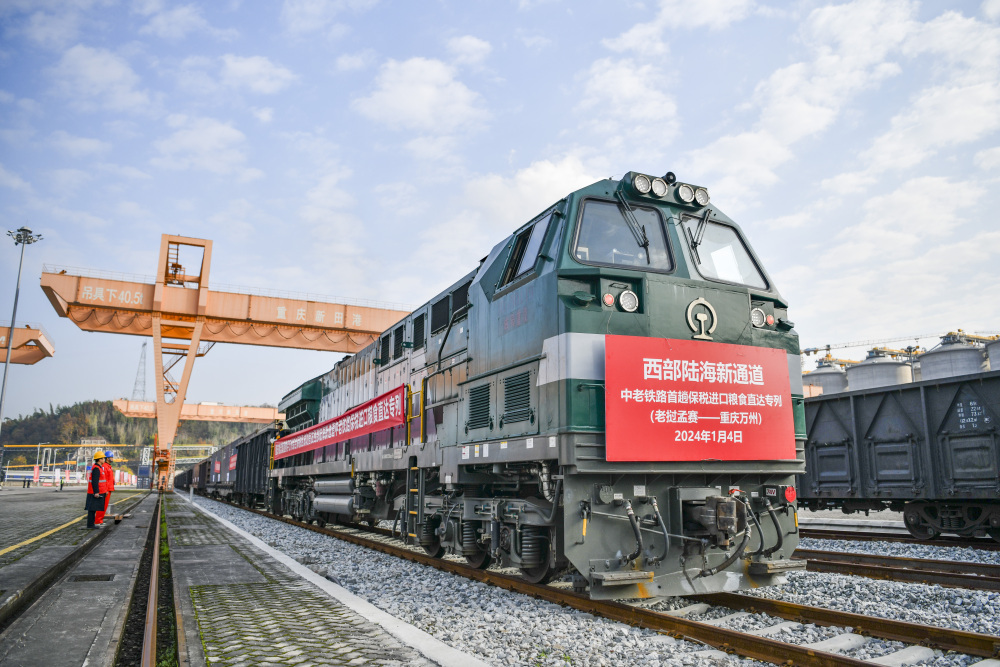Chongqing – The New International Land-Sea Trade Corridor (ILSTC), a key logistics artery linking western China with global markets, surpassed an annual throughput of one million twenty-foot equivalent units (TEUs) for the first time as of September this year.
By end-2024, ILSTC cargo volume reached 960,000 TEUs, up 283 times from 2017. "The steady rise in annual train operations has not only boosted export competitiveness for western enterprises, but also encouraged industries to move inland and deepened the interaction between domestic and international markets," said Liu Wei, Director of the ILSTC Operation and Organization Center.

The bonded imported grain direct train, part of the New International Land-Sea Trade Corridor connecting Muangxai in Laos with Wanzhou in Chongqing, has arrived at Xintian Port in the Wanzhou District. (Photo/Xie Zhiqiang)
In recent years, the ILSTC has rapidly expanded its reach through a series of new intermodal routes designed to enhance inland–coastal connectivity. The latest additions include the Hainan–Qinzhou–Xi'an grain and oil line, the UAE–Qinzhou–Lanzhou auto train, and the RCEP–Beibu Gulf–Henan bidirectional service.
Launched in 2017, the ILSTC is a flagship Belt and Road project jointly developed by China's western provinces and ASEAN partners. With Chongqing as its operational hub, it connects inland rail lines to coastal ports, slashing transport times and costs between western China and overseas markets.
At the core of this network lies the Beibu Gulf Port in Guangxi, strategically located on China's southern coast. Serving as the ILSTC's maritime gateway, the port provides efficient access from China's inland regions to Southeast Asia, the Middle East, and Europe. Inland cities such as Chongqing and Chengdu act as the main operational and commercial hubs, coordinating logistics flows and trade activities across the corridor.
As the network has expanded, so too has the diversity of goods transported. Agricultural products from Southeast Asia—including rice, mangosteen, passion fruit, durian, and longan—now flow into Chinese markets, while exports such as new energy technologies, advanced materials, and precision equipment are shipped abroad.
Integrated customs procedures have streamlined the process, allowing cargo to transfer seamlessly between rail and sea, significantly cutting transit times.
The range of cargo handled by the ILSTC has widened dramatically—from around 50 categories in its early days to 1,316 today. The list now spans grain, auto parts, computer components, and construction materials. The ILSTC's domestic network connects 18 provinces, 75 cities, and 163 stations, linking to 577 ports in 127 countries and regions worldwide.
By continuing to browse our site you agree to our use of cookies, revised Privacy Policy and Terms of Use. You can change your cookie settings through your browser.
For any inquiries, please email service@ichongqing.info